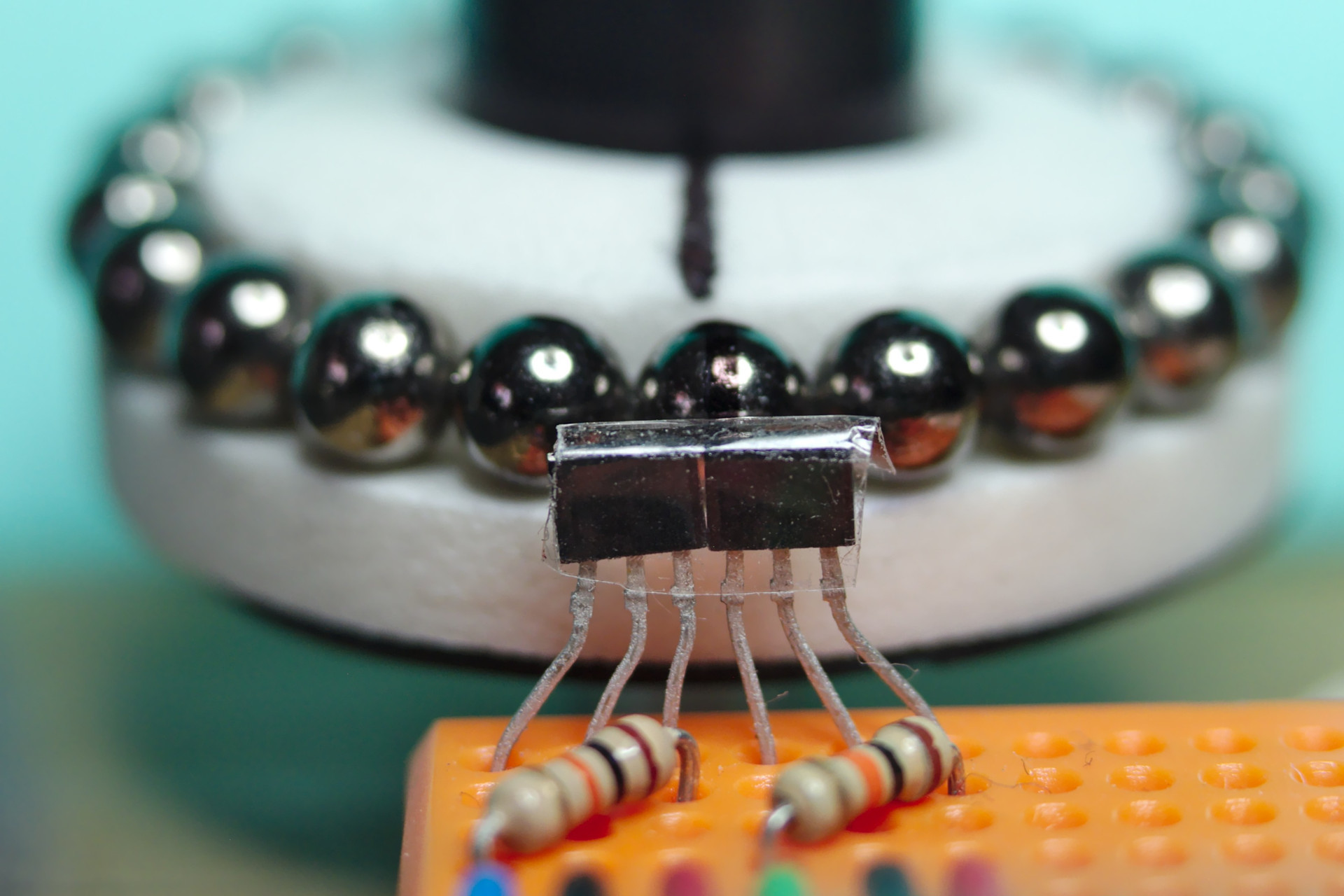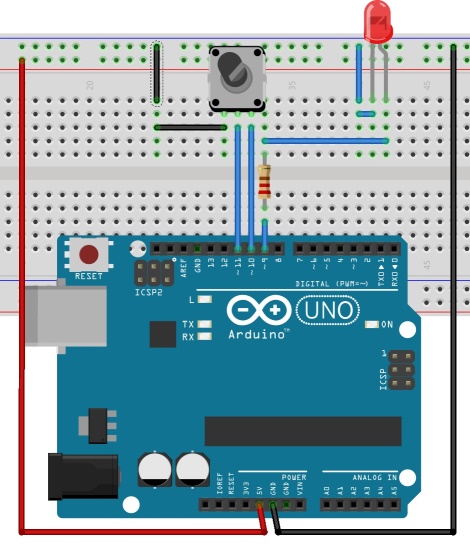

The rotary encoder thus also acts as a push button. When we push the knob of the rotary encoder from the top, the voltage goes LOW. The SW is the switch pin that gives the output of the active low push button switch.These voltages should be with in the range of 3.3 volts to 5 volts for normal working of this encoder. The GND pin is connected to ground and positive voltages are applied at + pin.

Rotary encoder module consists of five pins such as CLK, DT, SW, + and GND. The one we are using is the output rotary encoder and it is the simplest one. There are many types of rotary encoders available which are either classified as the output signal or the sensing technology. Most have 12 steps, but they can be up to 200. On many rotary encoders, when you will move it, you will feel a bump.

The rotary encoder has no start, middle, or end, so you can rotate it as much as you want. These can be used to control the brightness of the LED, controlling the servos, and many other things. It generates an analog or digital signal depending on the rotational movement. It determines the amount and the type of rotation. Introducting Rotary EncodersĪ rotary encoder is such a type of encoder which is used for measuring the angular position of any rotating shaft. Additionally, we will also show you how to control a servo motor through the rotary encoder module. They will focus on how to use the rotary encoder to monitor the direction of rotation. With the help of two sketches, we will show you two different ways to read the rotary encoders. We will discuss about the working of rotary encoders, its pinout, and its connection with Arduino. Become the Maker you were born to be.In this comprehensive user guide, we will learn to interface a rotary encoder module with Arduino. Because this sketch uses interrupts instead of a loop, it responds quickly and there’s no missed pulses. There are 20 steps in one full revolution, and this sketch can count over 65000 steps before starting from zero again. Rotating the shaft clockwise increments the index by one per step, rotating counter clockwise decrements the index. Pushing down on the shaft is a reset button that resets the encoder value to zero. For instance, set 140 on the encoder to keep a water heater at the correct temperature, or dial in 3600 to set a motor speed. This sketch will output a digit for each stop, so you only need to make that digit value (2,3,4, etc) equal something in your sketch. This works well for dialing in a temperature, speed, volume, or even making menu choices. There are no stops, it’s continuous 360 degree motion, and sends a signal to the controller for each “step” (you can feel the notches or detents). Normal volume controls and potentiometers have stops at each end of the scale. This is the third tutorial in our 37 in 1 Sensor Kit series.


 0 kommentar(er)
0 kommentar(er)
